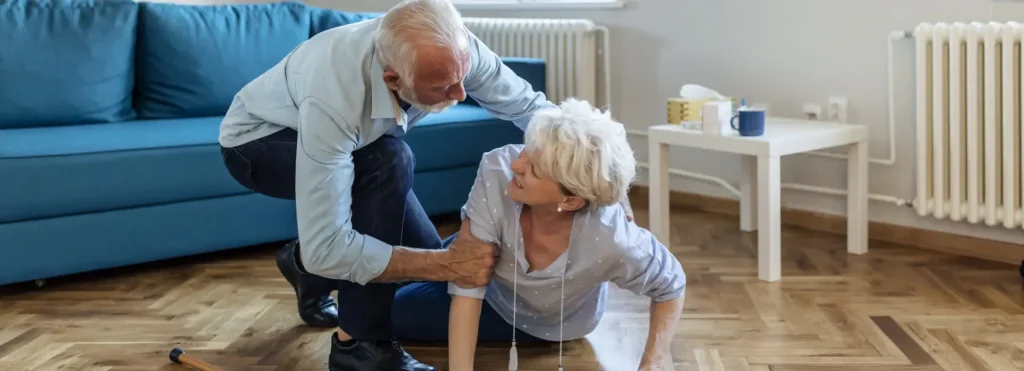
Essential Home Safety Equipment for Elderly You Should Have!
You may also be wondering what home safety equipment for the elderly is essential? It’s important to know that using these devices, is crucial for monitoring their health status and helping to manage these conditions, especially for seniors who are at risk for various health problems due to conditions like high blood pressure, arthritis, and heart disease.
Equipment for elderly care at home is one of the most important necessities for independent living of seniors and effective home care for these loved ones. Devices such as mobility aids, health monitoring devices, safety equipment, and hygiene products not only increase the safety and comfort of seniors but also prevent problems such as falls, bedsores, and inability to perform daily tasks.
These devices definitely play an important role in improving the quality of life for seniors. In this article from humanhealthmag, we examine the necessity and importance of using care equipment for our beloved seniors. We also introduce the most essential and practical medical and care equipment needed by seniors, which can improve the quality of life for both caregivers and their elderly loved ones. It is important to be very careful when choosing a caregiver for elderly parents. Keep reading!
What Are the Safety Devices for the Elderly?
During old age, people’s functional abilities change, and seniors may experience mobility problems, muscle weakness, or sensory impairments due to various reasons such as physiological changes or chronic diseases, making it difficult for them to perform daily tasks.
Home safety equipment for elderly is a collection of devices and tools that, in addition to providing safety and comfort, help seniors maintain their independence as much as possible despite these changes, and make daily activities such as eating, sleeping, and personal hygiene easier. This helps preserve human dignity and improve the quality of life for seniors.
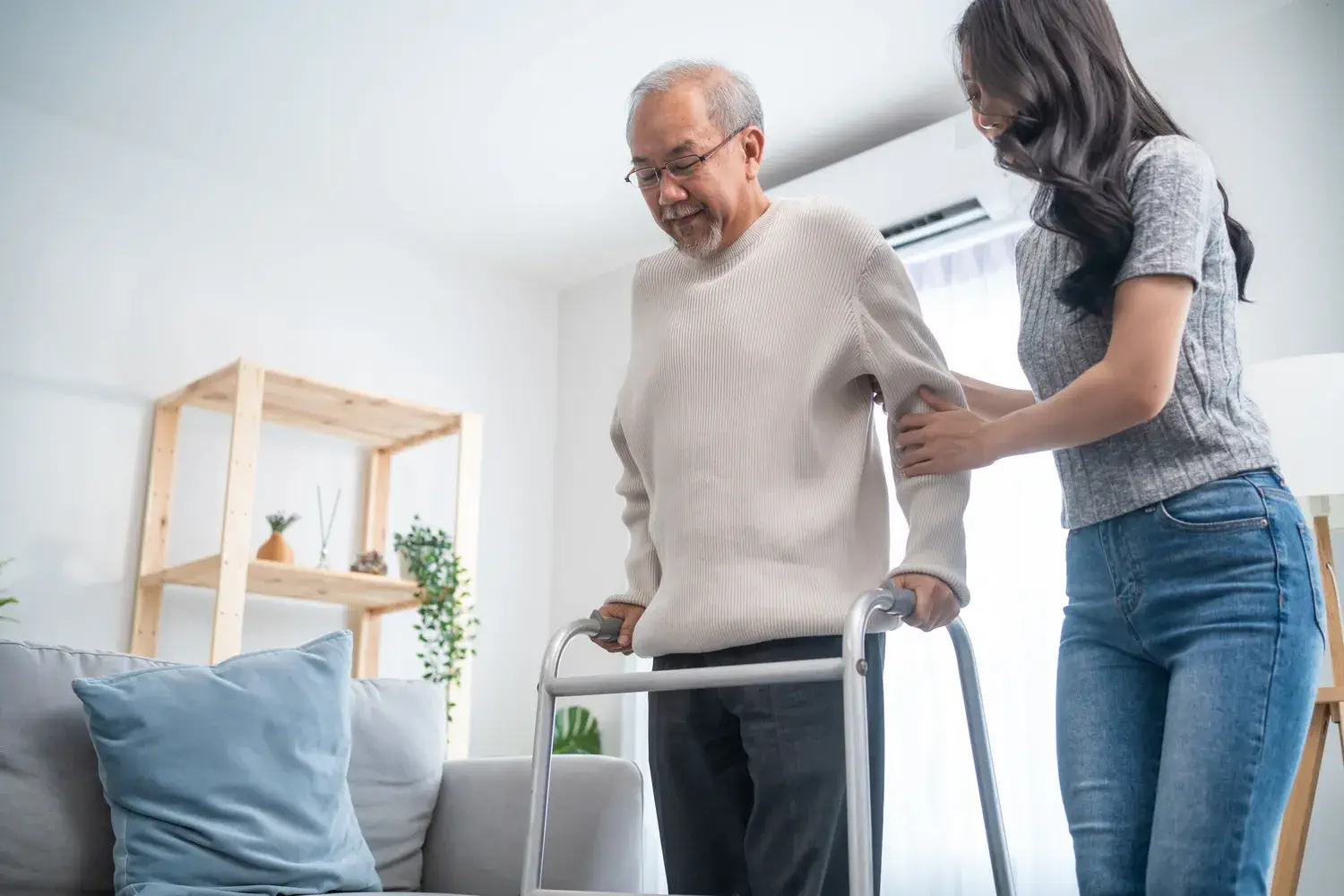
For seniors who are capable of handling their personal affairs, the use of care equipment provides a greater sense of security and reduces anxiety caused by disability or dependence on others. However, seniors with severe disabilities, without certain care equipment such as wheelchairs and portable toilets, would not be able to meet their needs even with the help of professional caregivers.
The Necessity of Using Home Care Equipment for Elderly
Many seniors, despite illnesses and declining functional abilities, prefer to live in their own homes or with their loved ones. This not only provides comfort and peace of mind for the elderly but also prevents many problems associated with living in nursing homes (such as contagious diseases and depression).
Research shows that seniors who live in familiar home environments experience better mental and physical health, and the costs of their care are also lower. However, maintaining the quality of life for seniors requires considering all issues related to their safety and comfort. Using care equipment tailored to the physical condition and mobility and functional abilities of seniors can greatly enhance their quality of life and provide peace of mind for family members and caregivers.
Home safety equipment for elderly allows caregivers to experience less mental and physical stress in addition to providing more effective care. For example, the use of assistive devices for moving and transporting disabled seniors reduces both the likelihood of injury to the senior and the physical strain on caregivers.
Benefits of Using Home Safety Equipment for Elderly
Some of the most important benefits of using elderly assistive devices at home include:
- Improve mobility for seniors: Inactivity is a factor in creating or exacerbating obesity and many chronic diseases in the elderly. Using mobility aids can help seniors maintain more mobility, do activities for elderly with limited mobility, and a more active presence in society
- Increased Safety and Fall Prevention: Using assistive devices such as walkers and canes, and tools such as grab bars, non-slip flooring, and alarm bells, prevent falls during exercise for seniors and reduces the risk of injuries
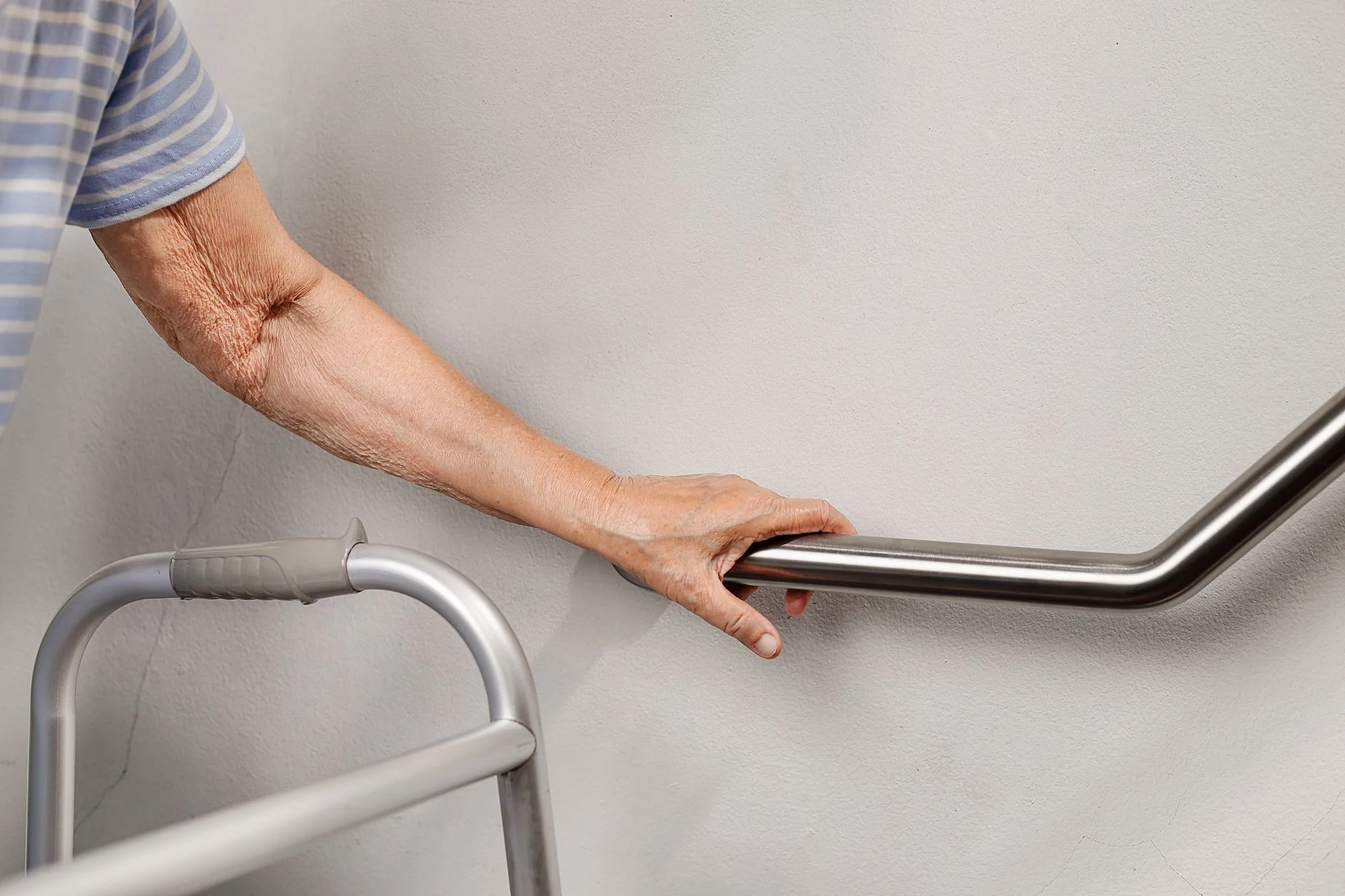
- Increased Independence for Seniors and Reduced Burden on Caregivers: Equipment such as wheelchairs, lifts, and special beds, by making daily activities easier for seniors, reduces the need for constant assistance from family members and caregivers
- Improved Mental and Physical Health: Seniors who live at home with the help of care equipment experience greater feelings of security, peace, and happiness
- Better Disease Management and Reduced Treatment Costs: Using medical equipment at home reduces the need for frequent hospital visits and, consequently, treatment costs
Essential Home Safety Equipment Checklist for Seniors
In the table below, you can see a list of the most essential home care equipment for the elderly:
| Category | Elderly Home Safety Equipment |
| Medical Equipment |
|
| Mobility Aids |
|
| Hygiene Products
|
|
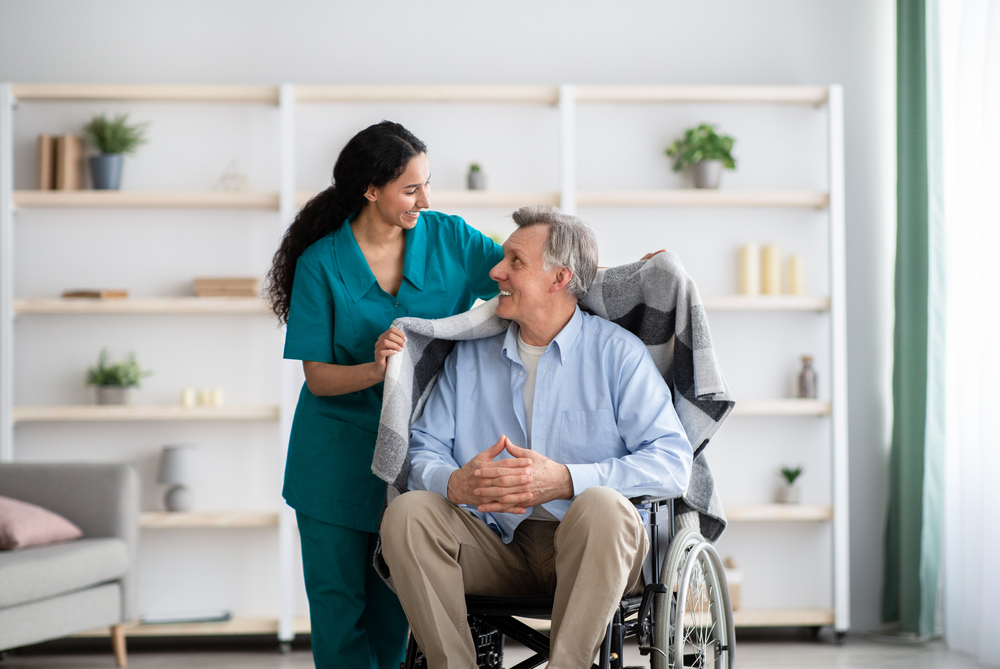
Types of Essential Home Safety Equipment for the Elderly
It must be said that performing daily tasks for the elderly can sometimes become so difficult that they need to use assistive devices or even a nurse. Therefore, it is very important to correctly understand the needs of an elderly person so that we can provide them with appropriate and efficient equipment. This helps them to live more independently and not rely on others. Consulting with a doctor can also be very helpful in choosing the right assistive devices. In this regard, we will examine the most important equipment that any elderly person may need at home.
Essential Primary Equipment
To answer the question, “What equipment is essential for elderly home care?”, the following are the primary items for safe and professional care:
- A suitable bed for the elderly with adjustable height and angle to ensure comfort and prevent bedsores
- Mobility aids such as wheelchairs, canes, and walkers to assist seniors with walking
- Installation of safety grab bars and handrails in strategic locations like bathrooms and toilets to prevent accidents from slipping or falling
- Use of non-slip floor stickers to ensure safety and prevent seniors from slipping or sliding while walking
- Adequate lighting in the home, especially at night, and easy access to various controls such as light switches, door handles, and faucets
- Emergency alert systems or other devices that allow for requesting help in emergency situations
- Health monitoring devices such as blood pressure monitors and glucometers to monitor and control health conditions
- Adaptive eating utensils (e.g., larger and heavier cups and pens) designed for hands with tremors or weakness
- Glasses and magnifying glass in case of visual impairments
- Appropriate hearing aid in case of hearing impairments
- Appropriate communication tools (e.g., phones and tablets with large letters and numbers)
- Appropriate entertainment tools (e.g., books, magazines, and puzzles)
- Various wristbands, knee braces, shoulder braces, etc. to help correct musculoskeletal problems and reduce pain.
- Assistive tools in the kitchen such as assistive tools for opening faucets or jar lids and long tongs for reaching items on high shelves
Assistive Devices for Elderly Bathroom
One of the challenges for the elderly is using the toilet and bathroom. Home safety equipment for elderly can help them perform daily personal hygiene with more safety and comfort. These devices greatly reduce the risk of falls for seniors
- Sitting and standing from a standard toilet are difficult for seniors with pain and stiffness in the knee and hip joints or other mobility impairments. Seniors who cannot install a higher toilet can increase the height by placing special plastic foams (with or without handles), a portable toilet seat, or a special bathroom wheelchair on the toilet seat
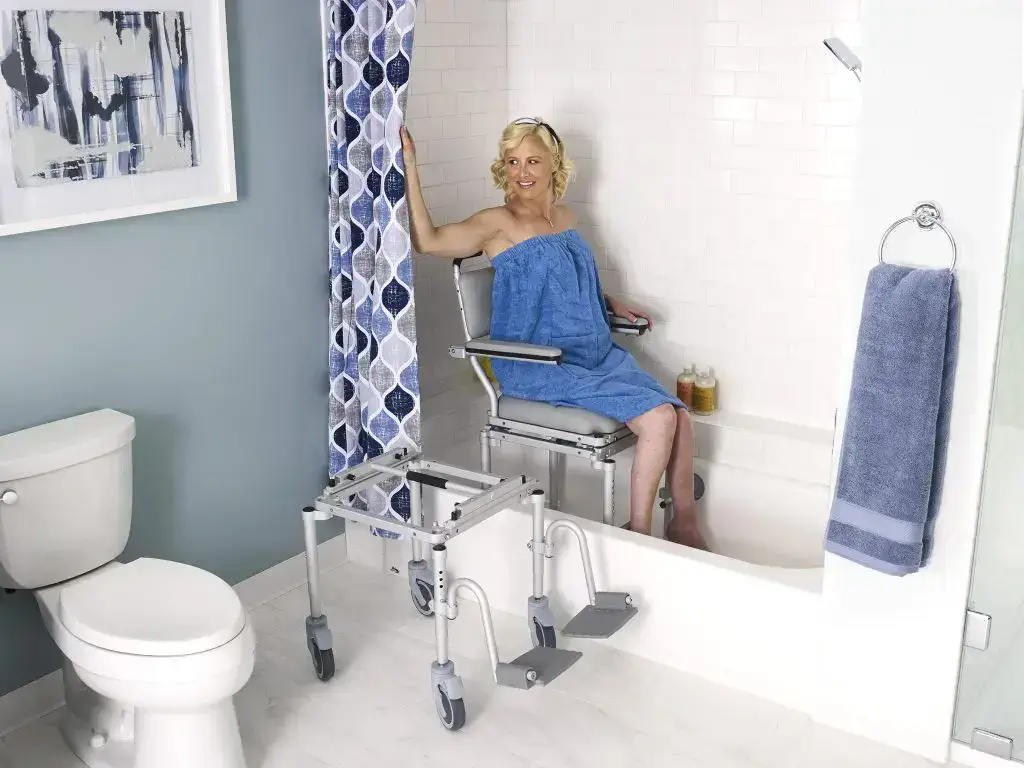
- Portable toilet can be placed on a squat toilet for seniors who do not have access to a western toilet or can be used to increase the height of an existing standard western toilet. It can also be placed next to the bed of disabled or ill seniors for greater comfort or accompany the senior when traveling
- Bathroom wheelchair can be placed and locked on a western or squat toilet or basin and is very useful for disabled seniors or those with mobility impairments
- Washbasin and bath chair can be placed near the shower or washbasin so that the senior can sit on them to relieve fatigue while using the toilet and bathroom
- Grab bars installed on the wall or floor around the toilet, washbasin, shower, and bathtub to help seniors use the bathroom and toilet more easily. (It is necessary to pay attention to the height appropriate to the senior’s needs during installation)
- Non-slip flooring used on the bathroom, toilet, and inside the bathtub floor to prevent slipping and falling of seniors
- Non-sip slippers suitable for preventing slipping on ceramic tiles
Hygiene Equipment
Hygiene equipment also considered among the most important and essential home safety equipment for elderly. These devices ensure their safety, comfort, and health; they also provide greater ease and security for seniors in performing their personal hygiene tasks. Here are some of the most important of these devices:
- A shower chair that allows seniors to sit while showering
- Adjustable shower board for easier entry and exit from the bathtub
- Medicine container with secure lid to keep medications away from moisture
- Adult diapers for seniors who suffer from urinary or fecal incontinence. Do you know: how to manage incontinence in the elderly?
- Sanitary under pads to protect the bed and linens from contamination
- Hygienic wet wipes for cleaning the skin of seniors, especially when changing diapers
- Moisturizing lotions and creams to prevent dry and itchy skin in seniors (especially in areas that are contaminated with urine and feces and are washed more often, especially after bathing)
- Soft toothbrush and mild toothpaste to prevent damage to the gums and the formation of oral sores
- Mild shampoos and soaps to prevent dry and irritated skin in seniors
- Soft washcloths and towels, preferably made of natural fibers to prevent skin irritation in seniors
Safety Equipment
For controlling, caring for, and protecting seniors at home, the following safety equipment is recommended:
- Safety gates for stairs to prevent falls
- Security cameras or audio systems for remote monitoring and control of seniors
- Sturdy handrails and grab bars throughout the house to maintain balance
- Non-slip rugs or mats in areas where there is a higher risk of slipping
- Senior-specific alert systems that can immediately notify emergency services in case of emergency
- Water faucets with temperature reduction systems to prevent burns
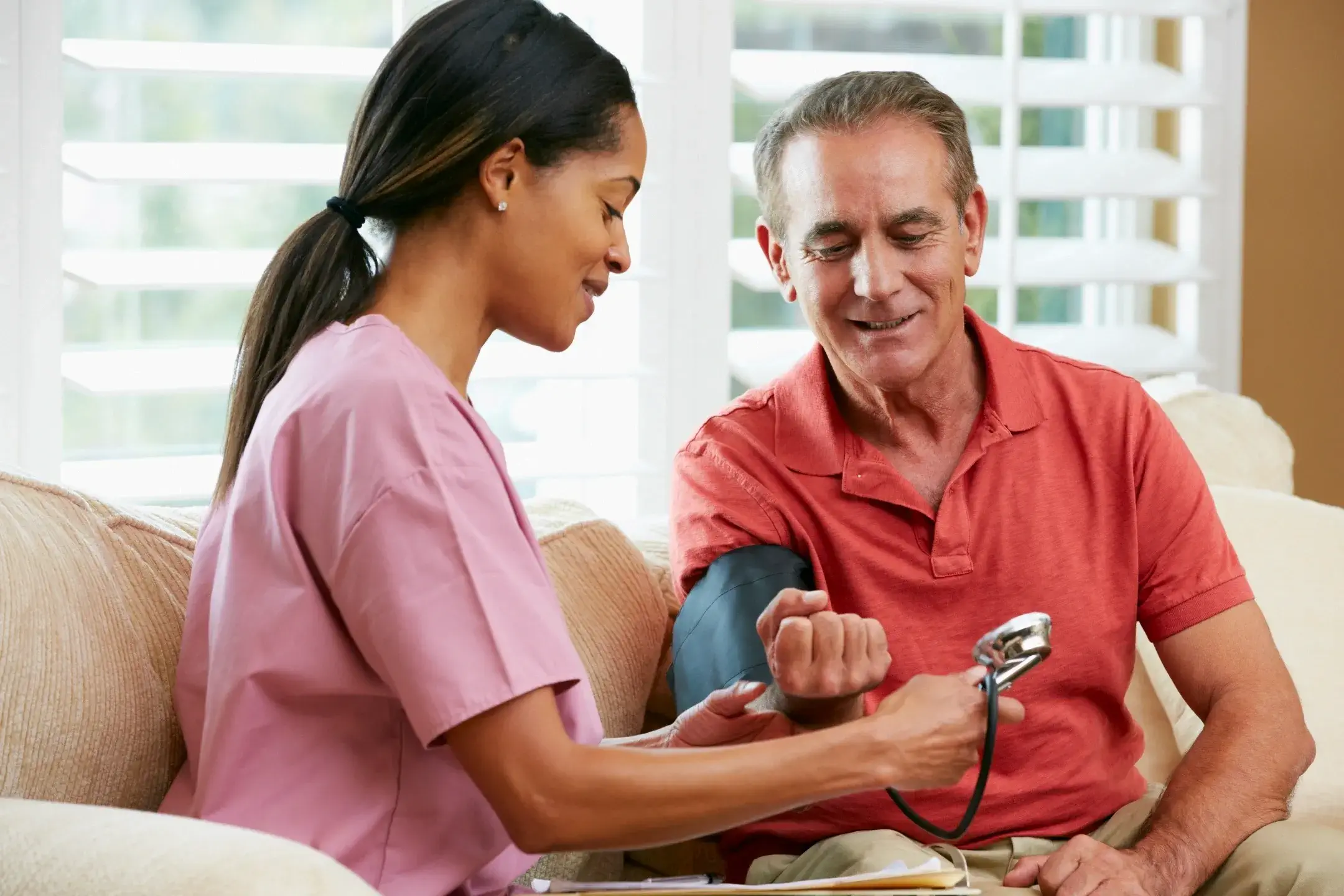
Medical Equipment
Another essential and important category of home safety equipment for elderly is medical equipment, as it directly relates to physical health and disease control. Elderly individuals often suffer from diseases such as heart disease, respiratory diseases, kidney diseases, blood sugar, high blood pressure, etc., for which medical equipment must be available at home to monitor and control their health. We will list and briefly explain the most common and important of these devices below:
- Adjustable hospital bed helps change the senior’s position and prevents bedsores
- Suitable wheelchair to increase access and ease of movement at home
- Respiratory devices such as oxygen concentrators or nebulizers to help with easier breathing, especially for people with respiratory diseases
- Health monitoring tools such as blood pressure monitors and blood glucose meters, which are essential for these individuals.
- Anti-bedsore mattresses to prevent sores from prolonged bed rest
Therapeutic Equipment
The use of therapeutic equipment at home can have a significant impact on the quality of life and comfort of seniors. This equipment enables basic and primary medical care at home, reduces the frequency of visits to hospitals and clinics, and it facilitates continuous monitoring of health status. It is important to note that the correct use of this equipment should be under the supervision of a doctor and in accordance with treatment guidelines to prevent any unwanted side effects. Here are some of the most common therapeutic equipment:
- Health monitoring devices, which are very simple to use, provide the ability to measure vital health indicators (blood pressure, blood sugar, blood oxygen level, and body temperature)
- Blood glucose meter for seniors with diabetes or those at risk of hypoglycemia
- Blood pressure monitors to control and manage high blood pressure (which can cause heart problems) and low blood pressure (which increases the risk of falls)
- Blood oxygen monitors to measure blood oxygen levels and heart rate (for seniors with asthma and other respiratory problems)
- Body temperature monitors to measure the body temperature of seniors when they are ill
- Nebulizer for seniors with respiratory diseases such as asthma and bronchitis (if the patient cannot use an inhaler or needs higher doses of medication)
- Medication organizers equipped with alarms to remind seniors of medication prescribed times and dose of medication, which is very suitable for people with Alzheimer’s
- Emergency alert devices that allow seniors to notify relatives and caregivers in emergencies such as falls or chest pain. The presence of GPS on these devices can inform caregivers and loved ones of abnormal changes (such as seniors with Alzheimer’s leaving home and getting lost) or prolonged lack of change in the senior’s location (e.g., due to a fall and inability to get up)
Concluding Remarks
Home safety equipment for elderly can significantly help maintain the health, independence, and safety of seniors and reduce the care burden; however, it is by no means a complete substitute for human assistance. Seniors, in addition to physical needs, also have emotional and social needs that must be met by family, friends, and caregivers.
Furthermore, sometimes the physical needs of seniors, even with the use of assistive devices, are not fully met, and seniors may need help from trained caregivers or nurses for mobility, daily activities, personal hygiene and care, and disease management and control.
Given the explanations provided, we have learned about the importance and necessity of this equipment for elderly care at home and have realized their extensive applications. The use of this equipment greatly helps seniors to feel more secure and comfortable in their homes and allows for better and more accurate care by families or caregivers, enabling the improvement or maintenance of health in a familiar and comfortable environment. We hope that this article has been helpful to you.
Don’t just read; also engage and inspire! What did this post teach you, and how will you apply it? Please leave your thoughts in the comments, and let’s learn from each other!

Frequently Asked Questions
Is Home Safety for Seniors Impossible Without All the Mentioned Equipment?
No! Each elderly person has a unique situation, and their needs for equipment are different. Many seniors never need most care equipment in their lifetime, while some people need equipment like blood glucose meters or raised toilet seats even in their early middle age.
For an Elderly Person with Mobility Impairment, Is a Cane Better, a Walker, or a Wheelchair?
The choice of mobility aid depends on the level of health, the extent of musculoskeletal injury, physical strength, balance, and coordination of the elderly person’s limbs. It is best to consult with orthopedic specialists or physiotherapists in this regard.
How Can I be Sure Which Care or Safety Equipment My Elderly Parents Need?
The elderly person’s treating physicians can guide caregivers about the necessary medical and mobility equipment. Physiotherapy and corrective movement specialists and professional nurses can also determine the necessary care equipment by clinically evaluating the elderly person’s condition and their living environment and provide recommendations for improving the safety and comfort of the elderly person’s living environment.
